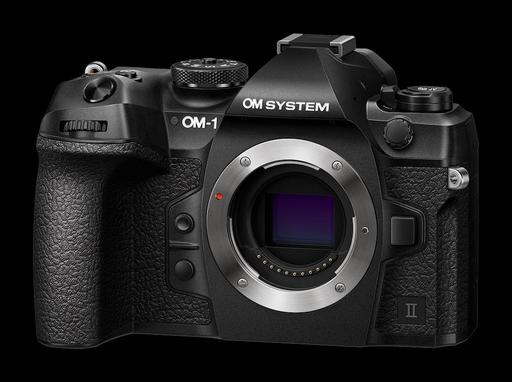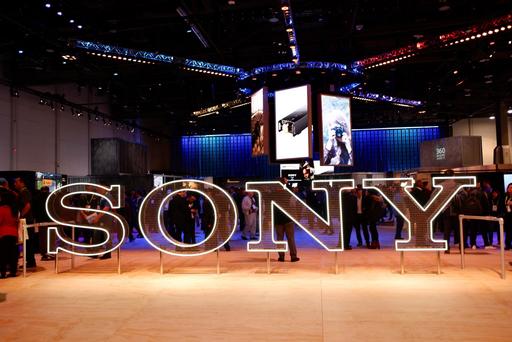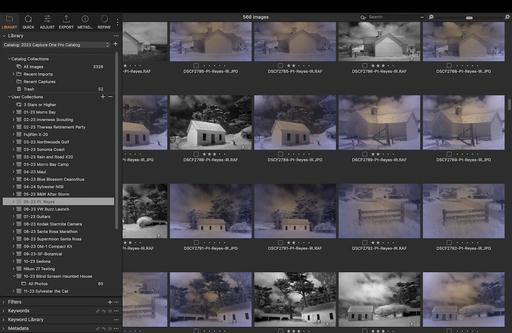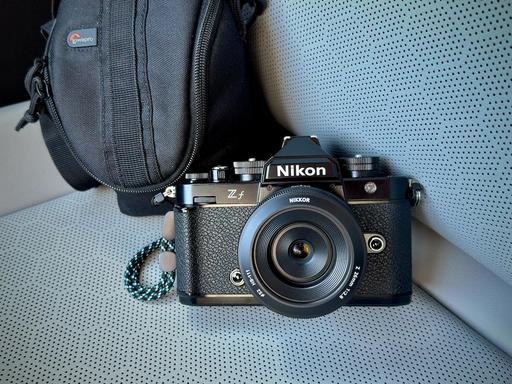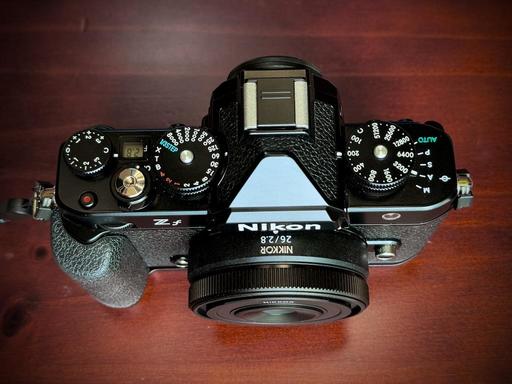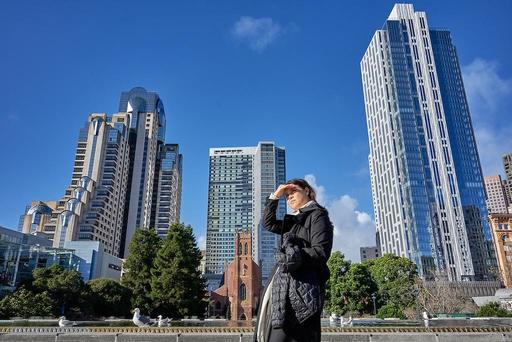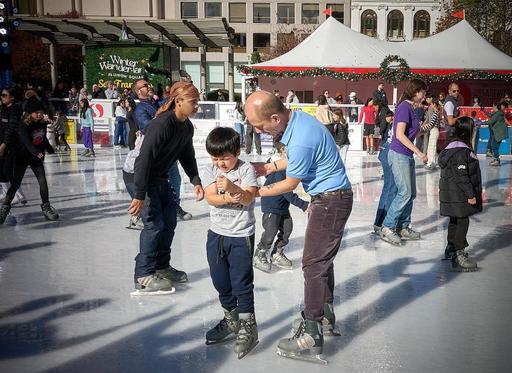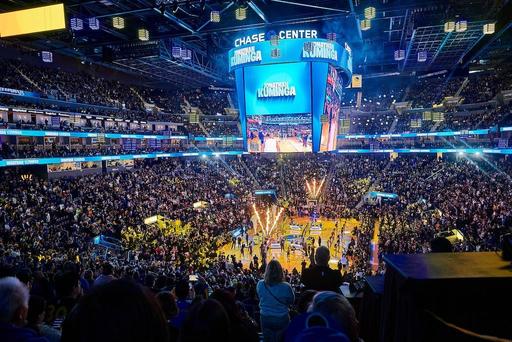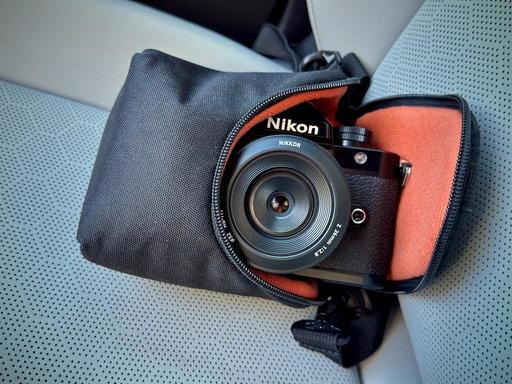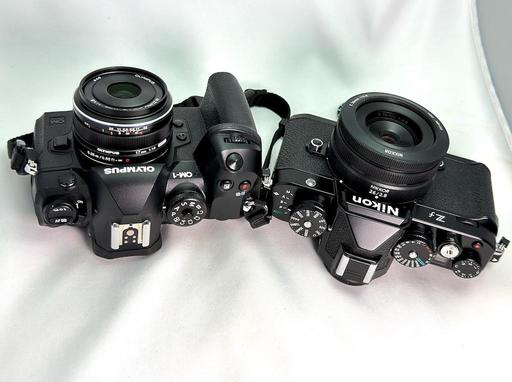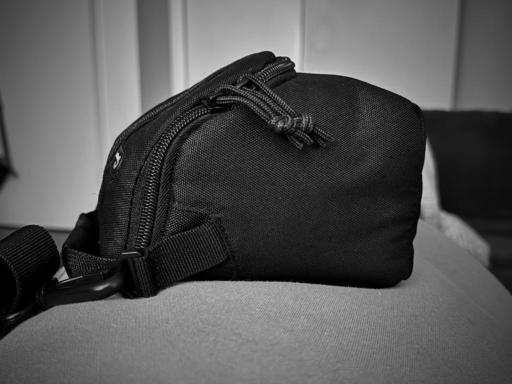This is The Digital Story Podcast #932, Jan. 30, 2024. Today's theme is "A First Look at the OM System OM-1 Mark II." I'm Derrick Story.
Opening Monologue
Just in case you were wondering, OM System is not sitting on its laurels with the OM-1 that was released in March 2022. They've followed up their compact marvel with the Mark II. And on today's podcast, I'm going to tell you all about its feature highlights and who I think this camera is for. I hope you enjoy the show.
Tune-In Via Your Favorite Podcast App!
Apple Podcasts -- Spotify Podcasts -- Stitcher
Podbean Podcasts -- Podbay FM -- Tune In
A First Look at the OM System OM-1 Mark II
When you first look at the OM-1 Mark II, you will notice two things. First, the crown badge now reads OM System and not Olympus. The second, practically nothing else has changed on the outside. And if you're an OM-1 owner, that's a good thing because all of your accessories will work on the Mark II, including the external battery grip.
But underneath the hood there are upgrades and an intriguing new feature. Before we get to that, let's take a look at the spec highlights.
- 5-axis image stabilization with up to 8.5 shutter speed steps compensation.
- Eye-level OLED electronic viewfinder, approx. 5.76M dots.
- 3-inch vari-angle monitor (electrostatic capacitance touch panel), approx. 1.62M dots.
- Dust and splash-proof (IP53 rated).
- High-speed cross-type phase-detection AF (1,053 points).
- High-speed contrast AF (1,053 points).
- AI Detection AF - computational photography for identifying a variety of subjects.
- Silent Sequential Shooting SH1 - approx. 120 fps with selectable 60, 100, and 120 fps without blackout.
- 4K video recording and vertical video mode.
- Sensor dust reduction via a supersonic wave filter.
- World's first Live Graduated Neutral Density shooting functionality.
- Can withstand freezing temperatures down to -10 degrees C.
- 50 MP handheld high-resolution shot and 80 MP tripod high-resolution shot.
- Compatibility with UVC (USB Video Class) and UAC (USB Audio Class), allowing seamless connection to a PC for use as a webcam.
- Twin UHS-II SD memory card slots.
Grad ND - A Fascinating New Feature
This technology uses computational photography to replicate the effects of using a half-ND filter, allowing the photographer to control brightness and darkness within the image, much like an external graduated neutral density filter.
Through Live GND shooting, photographers can adjust filter steps (GND2, GND4, or GND8) and types (soft, medium, or hard) in real-time through the EVF or rear LCD. This function allows for customization of the effect's position and angle.
Without the need for physical filters attached to the lens, photographers can leverage half ND effects, even with lenses lacking filter threads.
More AI Autofocus
Developed using deep learning technologies, the AI Detection AF has been enhanced to recognize an extensive array of subjects, including humans, formula racing cars, motorcycles, airplanes, helicopters, trains, birds, and common animals such as dogs and cats. This integration enhances the well-established Face Priority/Eye Priority AF, significantly refining autofocus capabilities. It can accurately identify subjects, even when individuals are in profile, facing away, or obscured by hidden facial features.
Subjects are tracked within the frame, ensuring they remain in focus. The OM-1 Mark II can follow intricate details like driver's helmets or the eyes of birds and other animals, going beyond what photographers could normally do on their own.
Who Should Buy the OM System OM-1 Mark II?
Wildlife and birding enthusiasts are at the top of the list. For example, combined with the new OM SYSTEM M.Zuiko Digital ED 150-600mm f/5.0-6.3 IS lens that provides effective focal lengths of up to 1200mm, and weighs just over 2,000 grams (4.4 lbs), photographers can easily work with this rig all day, no tripod required. And that's just one of the many telephotos available.
The OM SYSTEM M.Zuiko Digital ED 40-150mm f/4 PRO provides an effective reach of 80-300mm and weighs a mere 382 grams (13.5 oz). The f/2.8 version weighs 760 grams (1.67 lb) and accepts both 1.4X and 2X matched teleconverters. Other top-tier options include the Olympus 300mm f/4 PRO and the Panasonic Leica DG Elmarit 200mm f/2.8.
Macro photography is also a strength of this system. There are a variety of optics well-suited for this work. Add the increased depth of field resulting from the Micro Four Thirds sensor, and the OM-1 is a godsend for super closeup photography. Lens options include the OM SYSTEM M.Zuiko Digital ED 90mm f/3.5, 60mm f/2.8, and the 30mm f/3.5 macro optics.
Travel photographers and journalists would also benefit from this system. Rugged design, compactness, and versatility make the OM-1 Mark II perfect for those covering the world while traveling light.
That's not to say this isn't an excellent system for general photography. There are many capable interchangeable lens cameras available these days. But very few combine the strengths of the OM System in such a compact package.
Should OM-1 Owners Upgrade to the OM-1 Mark II?
I'm wrestling with this question myself. I have my OM-1 sitting here on my desk, looking as fresh and new as the day I bought it, and trying to decide if I should invest in the Mark II.
For dedicated Micro Four Thirds photographers who use the OM-1, the Mark II would provide a solid upgrade and allow the original OM-1 to serve as a secondary camera.
The Mark II has improved performance. For example, in Pro Capture mode, the Mark II allows for retrospective capture of approximately 99 frames, an increase over the OM-1's 70 frames. For sequential shooting, the OM-1 Mark II can capture 219 frames in JPEG format or 213 frames in RAW at 120 fps, a dramatic improvement over the OM-1's 92 frames for each.
Add the autofocusing speed improvement with new features such as Live GND and vertical video capture, those could be important upgrades depending on your photography needs. Keep in mind that you can continue to use all of your existing MFT lenses and OM-1 accessories with the Mark II.
The big question is, do these benefits justify the $2,399 price tag? That answer lies between you and your credit card.
The Bottom Line
The OM System OM-1 Mark II is a powerhouse interchangeable lens camera that provides more compact options (thanks to MFT lenses) than its full-frame competitors. The Mark II is especially appealing for serious photographers who venture outside of the studio into harsh environments and changing conditions, and who require the versatility of the vast Micro Four Thirds lens catalog.
Unless you're a stay-at-home kind of guy, or that you really like the cardio workouts that come with lugging lots of gear up a trail, I would say that the latest OM-1 Mark II is for you.
Meike Releases New 50mm F1.8 Autofocus Lens for Z/E Mount for $159
You can read more and place your order on the Meike Global site.
The lens is easy to carry and its images are sharp and clear at any aperture. The band new 50mm/F1.8 uses the newest optical structure, making it able to achieve a large aperture of F1.8 while maintaining miniaturization and lightweight. Multi-layer coating technology is used on both sides of the lens to restore more realistic colors. The lens is not easy to attach dust or stains, and can be easily wiped clean.
The Nikon Z mount is available now. The Sony E mount will be available by the end of February 2024.
Spring in Sedona Photography Workshop
April 16-19, 2024 - TDS photographers return to the greater Sedona, AZ area, but this time during the Spring to view the landscape in a whole new way. We will explore iconic locations, picturesque landscapes, mysterious vortexes, and towns frozen in time from the mining days. What a great way to kick off our 2024 workshop season!
You can learn more and reserve your spot by clicking here. Hope to see you in April!
Why You Should Print Your Photos
You can watch the video and read the article on FStoppers.com
Printing images is a rewarding yet often overlooked aspect of photography. This process transforms digital captures into tangible art, playing a pivotal role in a photographer's creative expression and giving you a meaningful way to display your work.
Coming to you from Simon Baxter, this insightful video begins with Baxter sharing his passion for woodland photography and his meticulous approach to printing. He emphasizes the importance of not rushing the process, allowing images to mature over time. Baxter's philosophy resonates with photographers who view their work as a continual process rather than a series of isolated events. His method of revisiting and editing images based on evolving emotional connections is particularly interesting. This philosophy, treating each step from shooting to printing as interconnected, enriches the final artwork and imbues it with deeper personal significance.
Baxter also highlights the technical aspects of printing, such as monitor calibration and paper selection, underscoring their impact on the final print. His detailed explanation of how different papers can influence the mood and texture of an image provides valuable insights for photographers striving to fully realize their artistic intent. This attention to detail in the printing process is a testament to the craftsmanship that goes into each piece and how even small differences can affect the final output. Check out the video above for the full rundown from Baxter.
Virtual Camera Club News
The Nimble Photographer Newsletter is now publishing every Thursday. Readers will enjoy a variety of content spanning from short photo essays, to commentary on weekly events, to reviews of the latest and coolest photo gear.
TDS Workshops! - You can sign up for available workshops by visiting The Nimble Photographer. Inner Circle Members receive a 10-percent discount on all events.
Inner Circle Members: A big thanks to those who support our podcast and our efforts! We are having a blast at our new Inner Circle hangout, the private group I've set up at DerrickStoryOnline. We'd love it if you join us. You can become an Inner Circle Member by signing up at our Patreon site. You will automatically be added to the new hangout.
Great Photography Articles on Live View - If you check out our publication and appreciate what you see, be sure to follow us and clap for those authors. You can find us at medium.com/live-view.
If you're interested in writing for Live View, drop me a line at dstory@gmail.com.
The New Donation Kit for Carefree Shipping of Found Film Cameras - If you've discovered a film camera that's no longer being used, our new Donation Kit makes it easy to pack and ship. Just visit the Contact Form on thenimblephotographer.com, click the box next to Donating a Film Camera, and let me know what you have. In your note, be sure to include your shipping address.
Affiliate Links - The links to some products in this podcast contain an affiliate code that credits The Digital Story for any purchases made from B&H Photo and Amazon via that click-through. Depending on the purchase, we may receive some financial compensation.
Red River Paper - And finally, be sure to visit our friends at Red River Paper for all of your inkjet supply needs.
See you next week!
You can share your thoughts at the TDS Facebook page, where I'll post this story for discussion.
